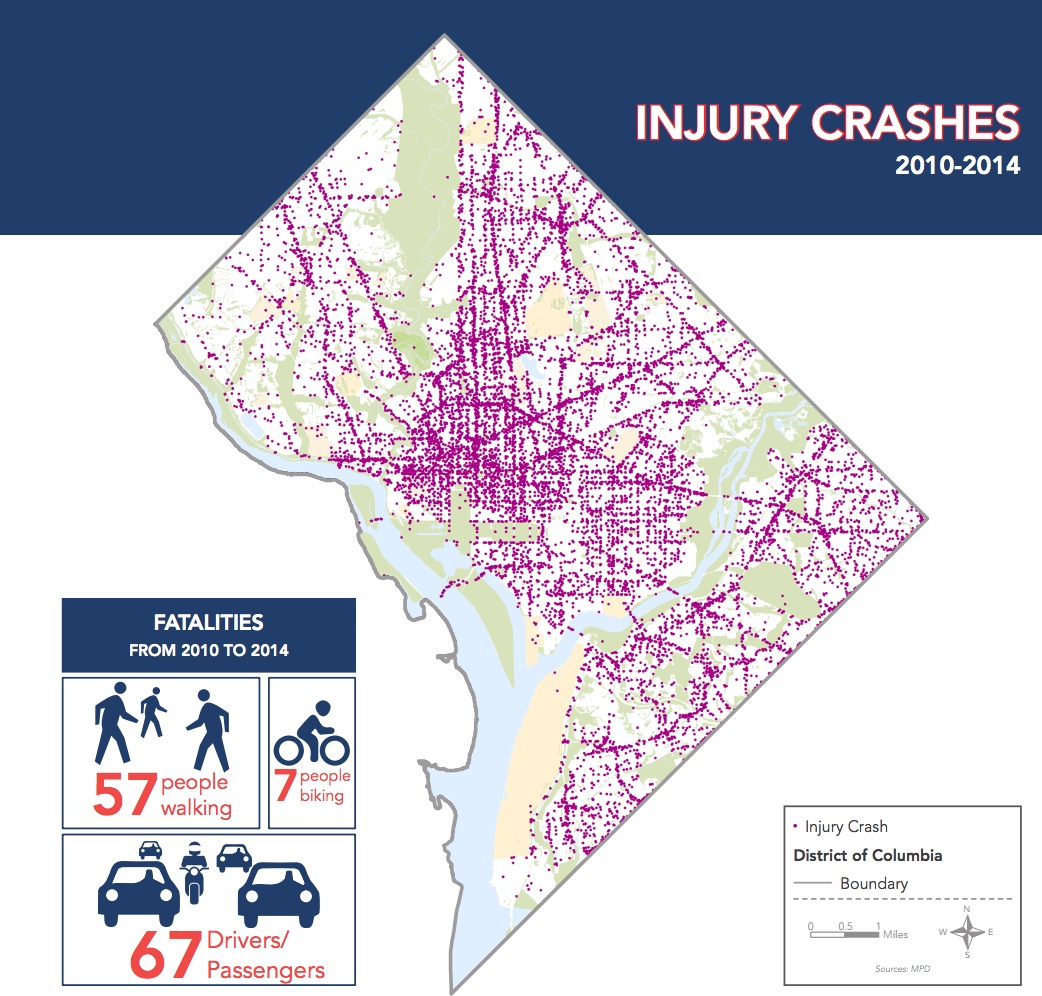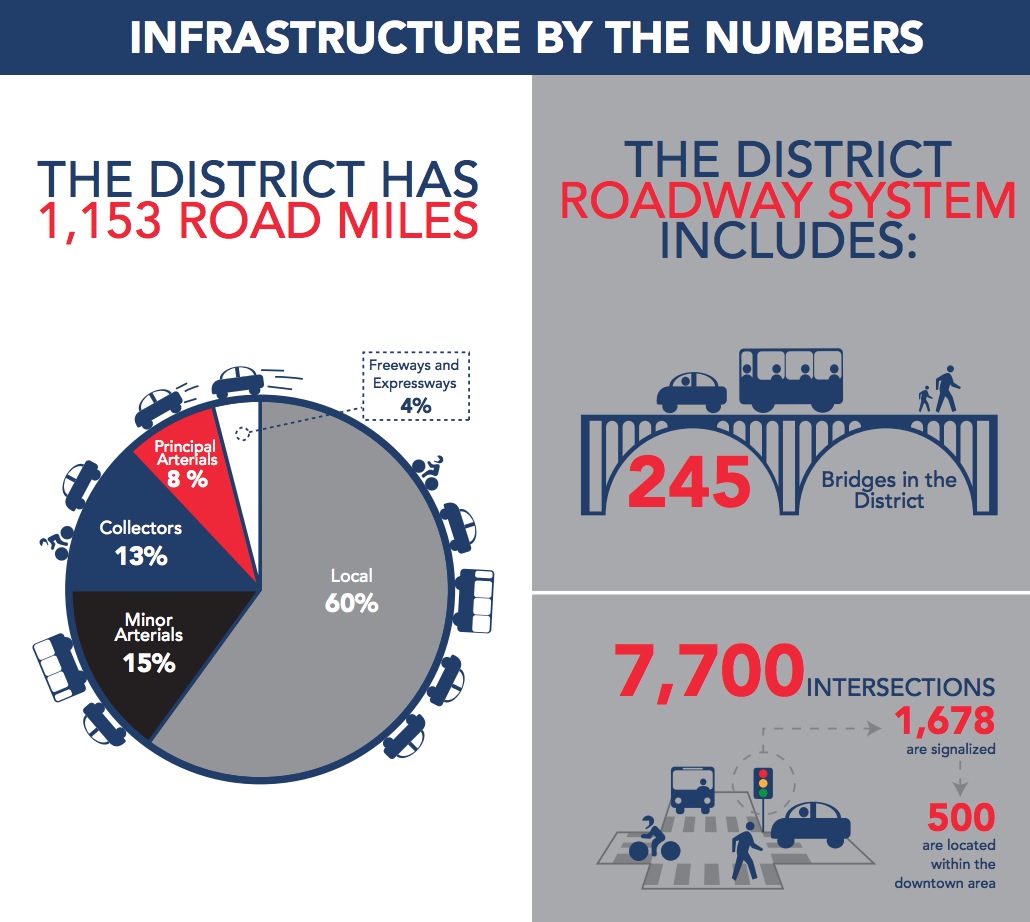DISTRICT DEPARTMENT OF TRANSPORTATION
Everyone Needs Safe Streets
Serious crashes happen everywhere in the District; in every ward, on nearly every street. 45 percent of the residents we surveyed know someone who has been killed or seriously injured in a crash.
Vision Zero aims to protect everyone in the District, regardless of where you live or how you travel.
This Action Plan is the result of the ideas, feedback, and input of numerous transportation safety advocates, community organizations, and our residents. It is our playbook for the first years of Vision Zero.
We specify quantifiable goals and timeframes for implementation. This Action Plan will guide the work of District agencies and partners, as well as encourage stakeholders to hold each other accountable for progress.
The goal of Vision Zero is straight-forward: zero fatalities and serious injuries in our transportation system, because no loss of life is acceptable. Vision Zero was first adopted in Sweden in 1997. Since then, fatal and serious injuries in Sweden have consistently declined, despite a regular increase in people driving, walking, biking, and using transit.
In American cities, Vision Zero is a new philosophy and approach to traffic safety. Under Vision Zero, the design, operation, and support of our transportation network will reflect the fact that humans are not perfect. Travelers inevitably make mistakes resulting in traffic crashes. We do not need to accept that those crashes will inevitably lead to fatalities. Using a holistic set of tools that incorporates the disciplines of engineering, evaluation, law-enforcement, and education, Vision Zero will eliminate all transportation-related fatalities and serious injuries on our streets by the year 2024.
Vision Zero: Why Now?
The Vision Zero philosophy requires safe conditions and responsible behavior for all travelers. Safety data indicates that the drivers and occupants of cars, trucks, motorcycles, and other motorized vehicles have been seriously and fatally injured on our streets. The strategies of this Action Plan aim to protect any and all travelers, while prioritizing policies and programs in the locations where they can have the greatest impact.
Vision Zero touches everyone. Safety data indicates that there are particularly vulnerable users of our transportation system: pedestrians of all ages and abilities (including people with mobility challenges) and people on bicycles. However, drivers and passengers in cars, trucks, motorcycles, busses, and other motor vehicles are killed and seriously injured each year on our streets.
Vision Zero Is a Regional Challenge
The approximate 660,000 person population of the District nearly doubles during the work day as residents of the region travel toward the Central Business District and other job centers. Virginia and Maryland drivers (combined) are involved in more than 40 percent of all crashes in the District. Moreover, 34 million tourists visited the District in 2012, adding to the daily volume of travelers. Many of the strategies in this plan can and must be coordinated regionally to achieve the vision.
Action Plan Process
In February of 2015, Mayor Bowser launched Vision Zero, joining with mayors across the country in response to U.S. Transportation Secretary Anthony Foxx’s Mayors’ Challenge for Safer People and Safer Streets.
In the following months, District agency workgroups convened to discuss safety strategies, while residents shared their concerns and suggestions regarding specific locations. District officials continue to learn from peer cities and focus on early implementation of safety programs and policies. Advocates provided feedback on preliminary Action Plan strategies. The final strategies in this Action Plan reflect all of these valuable perspectives.
Download full version (PDF): Washington DC Vision Zero Action Plan
About the District Department of Transportation
ddot.dc.gov
The mission of the District of Columbia government’s Department of Transportation (DDOT) is to enhance the quality of life for District residents and visitors by ensuring that people, goods, and information move efficiently and safely with minimal adverse impact on residents and the environment.
Tags: D.C., DDOT, District Department of Transportation, District of Columbia, safety, Vision Zero, Washington








 RSS Feed
RSS Feed